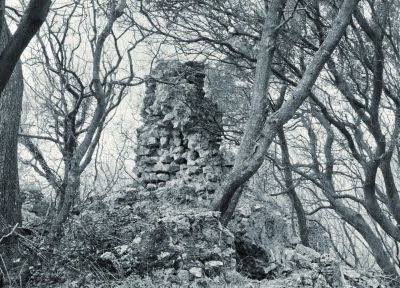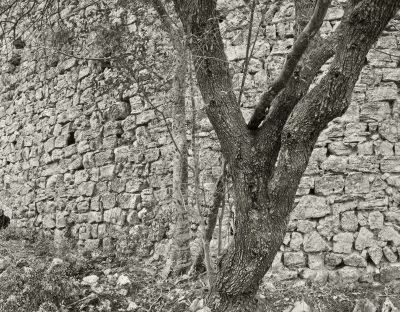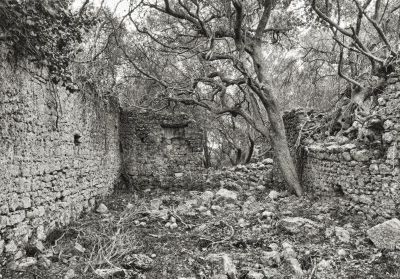The ruins in the wood and their folk story
In Capalbio we call ourselves the cult of hunters, to the extent that the wild boar has become the symbol of our land. I, however, was born in a family of gatherers and therefore never took part in the celebration of the hunting rites, but I still knew, from a young age, the dense life in the undergrowth, foraging for mushrooms and asparagus. My favourite place to look for them was always Capalbiaccio, the wooded remains of a late-medieval fortress now engulfed by decay. At least four things bind me indissolubly to the ruins on that rock: two legends, one discovery and one declaration of my love. I shall stick to the first two.
The first thing to know is that the castle of Capalbio is more in the hinterland, with respect to the hill where the fallen bastions of Capalbiaccio have slumbered away the centuries. This topographical detail is relevant because it goes to confirm the story that circulates among the people here, that Capalbio is not where it used to be. It was moved further from the sea and rebuilt on a slope less forgiving, the better to defend against pirates. The old, original Capalbio was sacked and erased, in the radius of havoc wreaked by Barbarossa's crew.
Historic Deconstruction
Nobody would tell me who this Barbarossa was. Those who did reply would say 'Don'tyou know? Frederick Barbarossa!' And I would shut up, feeling guilty about my ignorance, and still not understanding what would make the Emperor turn to piracy. Only when grown-up did I learn that the pirate Barbarossa was a corsair in the service of the Ottomans, whose real name was Khayr-al-Dīn and who lived hundreds of years after the death of Frederick I 'Barbarossa' Hohenstaufen. It was also as an adult that I learned that Capalbiaccio was never Capalbio, was never even called that, its true name being Castello di Tricosto. It was not destroyed by pirates, let alone by the Emperor, but by the Sienese, for strategic reasons in their fight against the Orsini. The popular legend, however, as is so often the case, speaks louder than the confirmed historical facts and it would be silly to blame it all on popular ignorance or on the false analogy with the State of the Presidi's fortified frontiers.
Mythic reconstruction
In truth, the legend is the fruit of an archaic mental trait typical of the Tyrrhenian Coast: the terror of threats from the sea. The most significant example of this we find in the Roman origin myths, the landing of Aeneas and his progeny who would subdue the natives. But we can also identify traces of this psychological make-up in historical episodes, such as Carthage, Pompey against the pirates, the anecdote of a captured Caesar, the character of Lica in Petronius et cetera. The link between the sea and the fallen castle emerges also from a second legend, which maintains that Capalbiaccio is connected to the Etruscan Port of Ansedonia via an underground tunnel. Sometimes it is enough to be silent and listen, for the subconscious eventually shows itself and its labyrinths.







